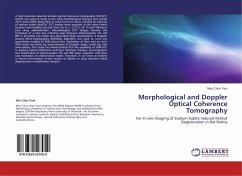In this work a novel approach is introduced to analyze the mechanics of the fluid-structure interaction problem in the inner ear. Because the motions during normal mechanotransduction are much smaller than the geometrical scales, a unified linear system of equations describes with sufficient accuracy the behavior of the liquid and solid in terms of a displacement variable. The finite-element method is employed to solve this system of partial differential equations. Based on data from the hair bundle of the bullfrog's sacculus, a detailed model is constructed that resolves simultaneously the interaction with the surrounding liquid as well as the coupling liquid in the narrow gaps between the individual stereocilia. The experimental data are from high-resolution interferometric measurements at physiologically relevant amplitudes in the range from a fraction of a nanometer to several tens of nanometers and over a broad range of frequencies from one millihertz to hundred kilohertz.








